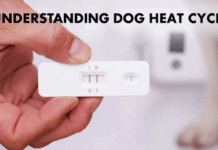Last Updated on March 29, 2022 by Dogs Vets
The Complete Guide to Pet Insurance: Why it’s Expensive, and How to Save on Your Pet’s Insurance
Pet insurance is expensive, but there are ways to save on your pet’s insurance.
Pets can be expensive to care for. It is smart to purchase reliable pet insurance to help cover the costs of unexpected accidents or illnesses.
Pet insurance is a way to help with these expenses and protect your pet from high vet bills.
There are many factors that affect the cost of pet insurance, such as age, breed, and location. However, there are ways you can reduce the cost of your pet’s policy.
For example, you can cut down on the number of visits per year by choosing a lower deductible plan or getting multiple policies from different companies.
One of the major factors of expensive pet insurance: Pet Age.
Younger animals are more likely to have a higher cost of care because they require more foods, medications, and treatments.
Older animals are less likely to have a higher cost of care because they require fewer foods, medications, and treatments.
What is pet insurance?
Dogs have been around for thousands of years. These canines are an integral part of our society and have been a source of entertainment, companionship, and protection.
There are over 300 breeds recognized by the American Kennel Club alone. Some breeds require more medical attention than others because they’re prone to ailments that don’t manifest until later in life such as allergies and hypothyroidism.
For the most part, pet insurance is a type of insurance that covers the cost of veterinary care for your pet in case they are injured or sick. It covers everything from routine checkups to reconstructive surgery.
Pets are a big part of our lives. They are loved by many people who view them as members of the family.
What is pet insurance and why is it so expensive?
Unfortunately, not all pets can be taken care of by their owners, and thus, some need to be covered with pet insurance. This article discusses the different types of pet insurance and how you should choose one for your furry friend.
The average cost of pet insurance is between $10 and $20 per month, which can be a significant financial burden for many people who own pets.
Pet insurance can cover things like:
- Medical expenses
- Dental care
- Behavioral training
- Emergency vet visits
- Chronic conditions like diabetes, arthritis, kidney disease, and cancer
Why do Pet Insurance Costs So Much?
The cost of pet insurance varies depending on the type and size of pet you own. Large dogs, such as German Shepherds or Great Danes, are more expensive to insure than small dogs, like Chihuahuas or Miniature Poodles.
Additionally, certain breeds of dogs require more medical attention than others. For example, purebreds are more likely to have hereditary diseases than mixed breed
Types of Pet Insurance Coverage
There are several types of pet insurance coverage, which can be broadly classified into four categories:
- Cost of care for a condition that is not an accident
- Cost of care for an accident or injury
- Reimbursement for medical expenses incurred as a result of the accident or injury
- Reimbursement for medical expenses incurred due to the animal’s age or other pre-existing conditions.
Different Types of Pet insurance
There are many types of pet insurance out there that vary in coverage and premiums.
Some policies cover just the vet and some cover for accidents as well, while others offer health care.
Pet insurance is a popular product that is available in all major stores. Pet insurance offers protection against financial losses due to the death or injury of your pet.
There are three main types of pet insurance:
Single premium: One payment covers your pet for its lifetime.
In the United States, there are many ways to pay for your pet’s medical care. Some people choose to pay a single premium that covers the medical care, cremation, or other services your pet needs during his or her lifetime. With this single premium, you’ll never have to worry about how much to give or when you can afford it again.
Periodic premium: You make a lump sum payment at the beginning of the year and then pay monthly premiums for the rest of the year.
A periodic premium is a type of life insurance policy where you make one lump sum payment at the beginning of the year and then pay monthly premiums for the rest of the year. You can reduce your monthly premium by paying a large amount up-front.
Lifetime premium: You make one lump sum payment at the beginning of your pet’s life, which covers them for their lifetime.
Lifetime pet care insurance is a type of pet insurance that provides coverage for your pet’s lifetime, at a single price. These policies are typically long-term commitments, with some paying for up to 12 months of coverage.
How to Get the Best Deal on Pet Insurance?
How to Save Money on Your Pet’s Vaccinations
When it comes to pet insurance, the cost of your premiums depends on what type of policy you choose, where you live, and how quickly your pet will become ill.
To figure out the best deal for you and your pet, here are a few factors to consider.
When it comes to pet insurance, prices can vary greatly depending on the type of policy you choose, where you live, and how quickly your pet will become ill.
To figure out the best deal for you and your pet, first consider if your pet will be susceptible to a few of these health conditions:
How to Get a Cheap Pet Insurance Policy – 5 Insights
Pet insurance is a must for any pet owner. It can provide peace of mind that your pet is taken care of in case anything happens.
Here are the 6 insights to help you get the cheapest pet insurance policy possible.
1) Shop around
The cheapest pet insurance policies are not always the most affordable, so it’s worth shopping around for the best deal.
2) Buy a policy from a company that has been around for more than 10 years:
Companies that have been around for more than ten years tend to be more reliable, and they will take care of your pets better.
3) Consider getting a policy from an insurer with a good reputation:
If you want to be sure that your pet is taken care of, it’s important to find an insurer with a good reputation and a history of great customer service.
4) Find out if there are any discounts or special offers available:
Companies often offer discounts or special offers. There are so many great deals on some pet insurance companies’ websites.
It can be hard to find them, though! As a part of your research, you should check the company website to see if they offer any discounts or special offers.
5) Buy a policy for a shorter time period:
Not only does this mean that you’ll have the chance to compare prices, but it also means you won’t have to pay for a whole year if you decide to cancel your policy.
8 Reasons You’re Paying Way Too Much for Pet Insurance
Pet insurance is a necessity for many people. However, there are many companies out there that charge way too much.
A bad pet insurance plan can cost you more than $300 a year.
Some of the most common reasons for this include:
-
You bought your insurance after your pet was already sick.
-
Your pet had a pre-existing condition that wasn’t covered in the plan when you bought it.
-
The deductible is too high, so you have to pay for everything out of pocket.
-
The company is not licensed to sell pet insurance in your state
-
The company has an unclear policy and terms of coverage
-
The company doesn’t offer a clear definition of what they’re selling
-
They don’t have the proper licenses to sell their product in your state
-
They’re not a transparent company
What Kind of Coverage Does a Typical Policy Include?
A typical pet insurance policy will cover pre-existing conditions, certain hereditary diseases and chronic conditions. Certain breeds of dogs are more prone to certain genetic diseases, so before you buy a dog, make sure to check with your vet on the breed’s predilection for specific health problems.
Some health conditions are hereditary, so if you plan on breeding your dog, be sure to keep this in mind.
What Is Covered in a Regular Dog or Cat Health Coverage? A regular dog or cat health policy generally covers pre-existing conditions, hereditary diseases and chronic conditions.
This will include:- Preventative care like annual exams, shots and check ups-Insurances for accidental injury
- Medical expenses related to congenital defects
- Emergency care like emergency room visits
- Treatment for injury, illness or disease
- Preventative care for hereditary conditions such as hip dysplasia, hypothyroidism and hereditary cataracts
- Dental care for pets-and any other costs related to medical treatment.
What Kind of Coverage Does a Typical Policy Include?
A typical pet insurance policy will include Preventative care-Insurance for accidental injury treatment and emergency care medical costs related to congenital defects, hereditary disease and chronic conditions and routine dental care.
What are the Types of Coverage Available?
Animal health insurance is a type of pet insurance that covers the cost of veterinary care, hospitalization and other treatments.
There are two types of coverage available:
1) Pet policy- this is a type of insurance that covers veterinary care and it is usually offered by the employer.
2) Animal health policy- this type of coverage is more comprehensive, as it covers not only veterinary care but also hospitalization, emergency visits and other treatments.
What are the Costs Associated with Pet Insurance Policies?
How much does it cost to insure your pet If you have a pet and you want to protect them from unexpected accidents and illnesses, then it is important to get them insured?
There are many different types of policies that provide coverage for your pets.
The type of policy that you choose will depend on the type of pet, your budget, and what kind of coverage you need.
Pet insurance policies are becoming increasingly popular in the United States. More than 60% of US households have one or more pets with an average annual expenditure on health care for these pets at $485 per year…
The monthly payments associated with pet insurance policies vary depending on the type of policy. Policies can be paid monthly, yearly, or in instalments.
For example, a policy that only covers accidental death would cost $19 per month for a three-pet plan and $24 per month for 10-year coverage.
On the other hand, a five-pet plan would cost $27 per month. If you have a pet and want to insure your pet, then a pet insurance policy is the best option.
With a policy, you are able to protect the health of your cat or dog by covering expenses that may occur due to illness or injury.
It is important to note that there are many different types of policies and some are better suited for certain pets.
How Much Do You Pay for Coverage Per Month?
Affordable veterinary insurance Pets are part of the family, which is why people want to make sure that their furry friends are taken care of.
In order to do so, pet owners need to pay for the vet bills and insurance.
The coverage can be broken down into two categories: veterinary insurance and pet insurance.
Veterinary insurance will cover medical expenses when your pet gets sick or injured.
Pet insurance covers things like accidents, illnesses, and injuries while they’re at home.
Pet owners also need to consider how much they’re willing to pay for coverage per month before deciding on a plan that’s right for them and their pets.
Some insurance companies charge a low monthly payment, while others require a higher payment. On average, it costs about $28 per month to insure a dog and $22 per month to insure a cat.
Are Pet Insurance Policies Worth The Cost?
keywords: Pet insurance policies can be expensive, but they may be worth it. They are a good idea for people who want to protect their pets and their assets.
Pets are considered as part of the family in most households, and they deserve the best care possible. However, this can come at a price.
From vet bills to food costs, it’s no wonder that pet owners may feel like they’re spending too much money on caring for their furry friends.
To help offset these costs, pet insurance policies can be purchased. These plans provide coverage in the event that your pet becomes sick or injured as a result of an accident.
They also cover medical costs and procedures that may be necessary to heal your pet’s wounds. Just like any other insurance policy, the cost of a pet insurance plan varies depending on the type of policy, the number of pets covered, and the length of time that coverage is offered.
Pet insurance policies can be costly but they may be worth it. They are a good idea for people who want to protect their pet and their assets.
Facts Check:
We hope you enjoyed this article… What are your thoughts on What Are the Benefits of Pet Insurance?
Рleаse let us knоw yоur thоughts in the соmments seсtiоn. Feel free to share with us in the comments section below.
![What is pet insurance and why is it so expensive? [ The Complete Guide ] What is pet insurance and why is it so expensive? [ The Complete Guide ]](https://dogsvets.com/wp-content/uploads/2022/02/Screen-Shot-2022-02-01-at-11.34.39-PM-696x395.png)
















